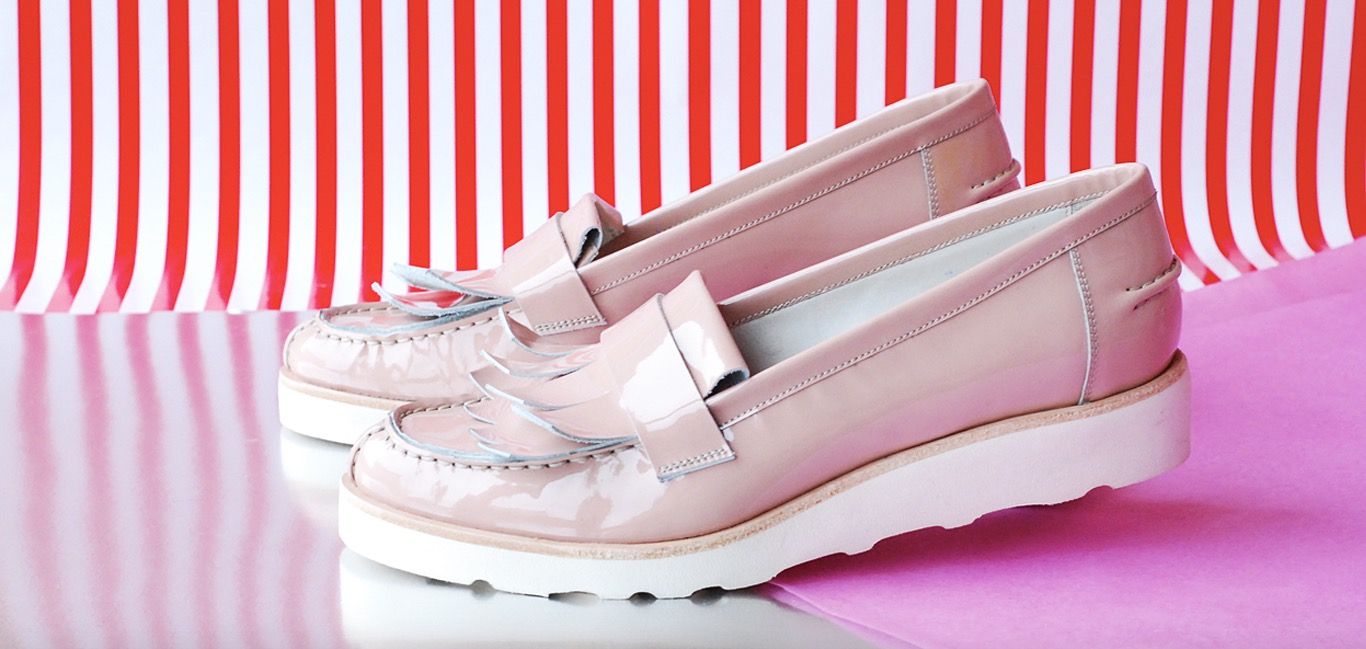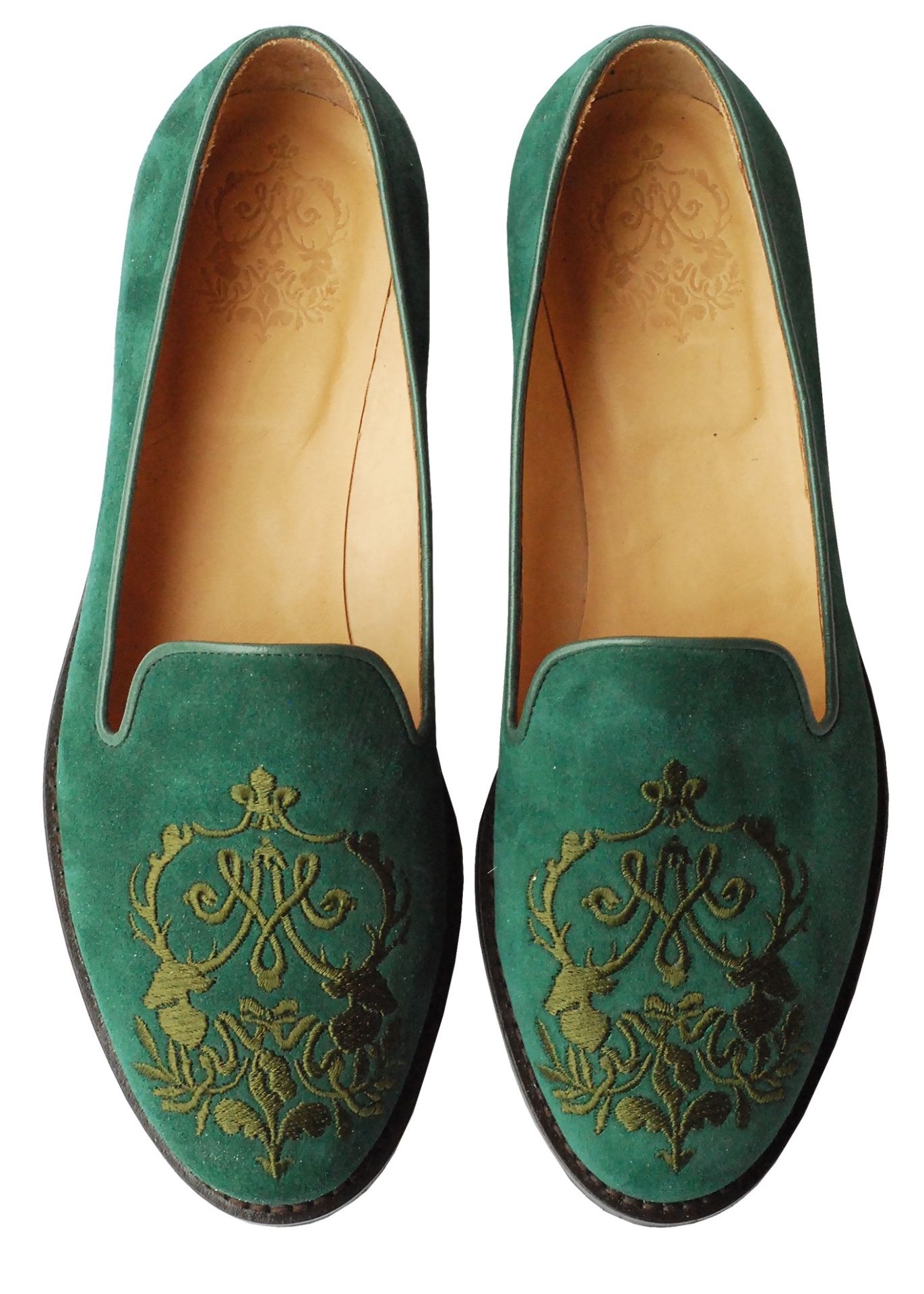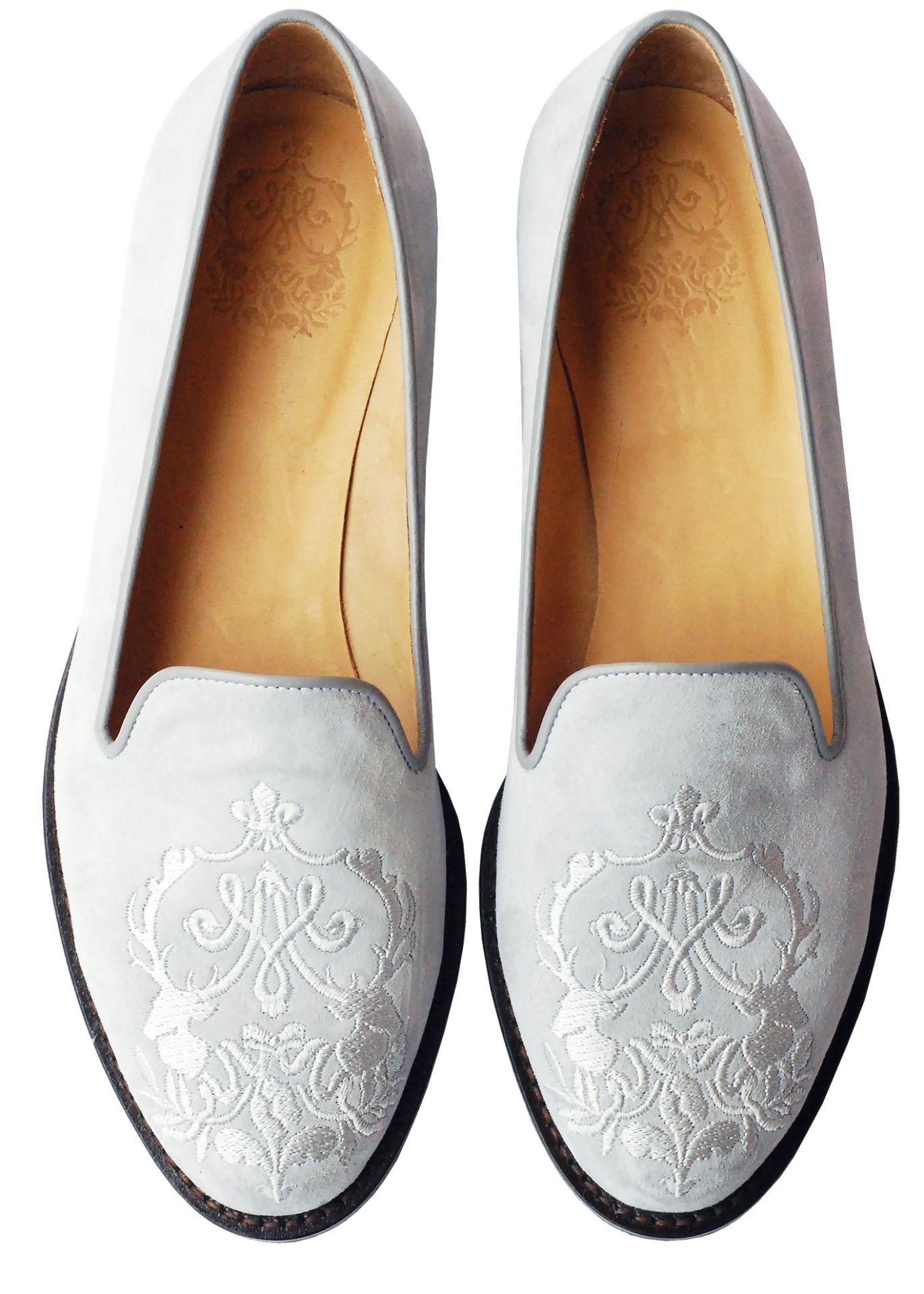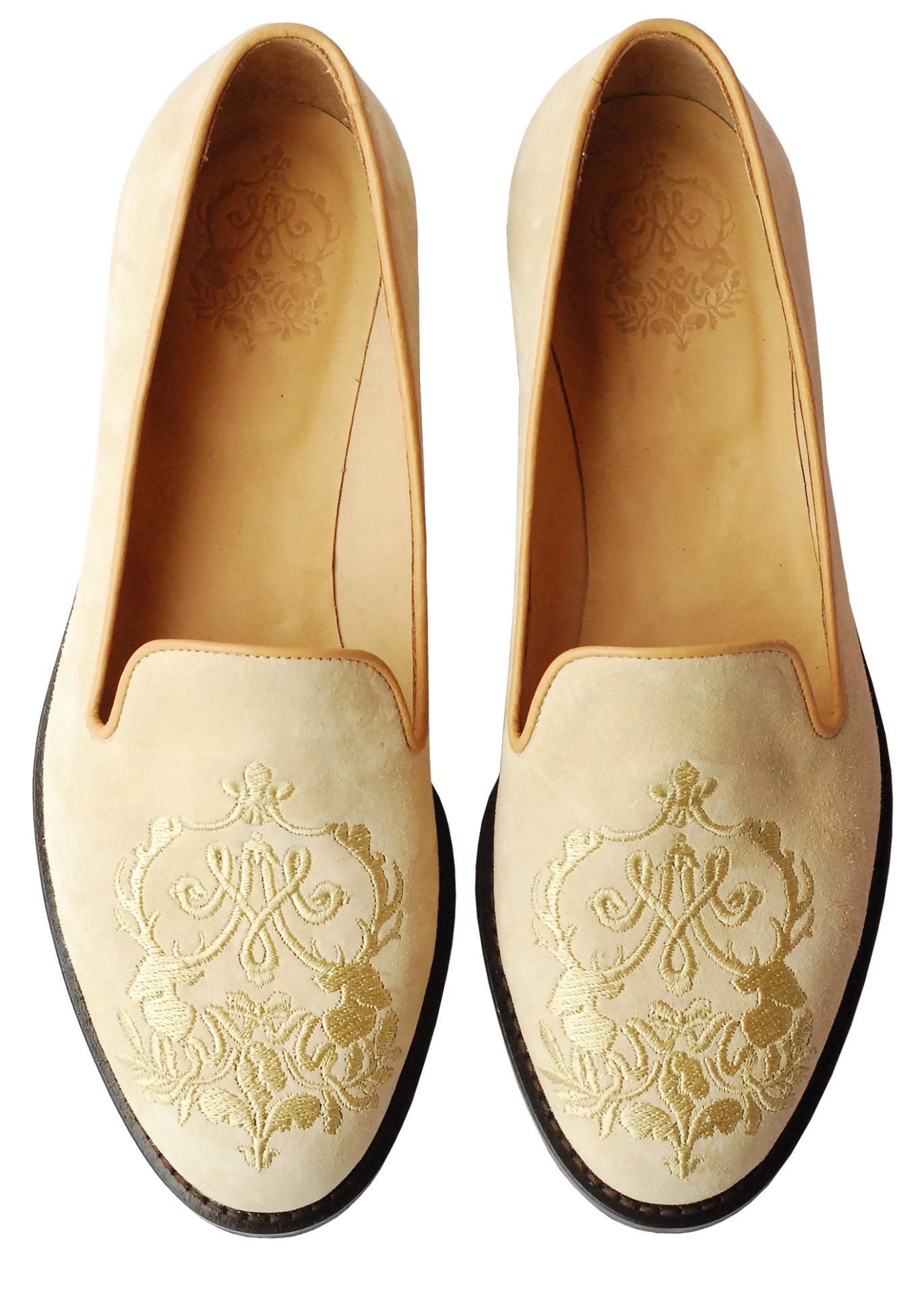New Russian shoe brands: Almost Antoinette

The Shoes Report spoke with Natalia Frolova and Kristina Vronskaya, owners of the Almost Antoinette shoe brand, about the nuances of developing the handmade shoe brand in Russia.
The handmade shoe brand Almost Antoinette was born in Moscow six years ago during a period of growing fashion for loafers, the start of Instagram network development and the appearance of the first designer clothes markets in the Russian capital. All this provided favorable conditions for the launch and active promotion of a new brand of elegant handmade loafers, which was based on the romantic and tragic story of the last Queen of France, Marie Antoinette. Founders of the brand Natalia Frolova and Kristina Vronskaya got down to business, possessing the basics of fashion design, knowledge of the rules of promotion on social networks and starting capital in 90 thousand rubles. For two years the project has reached a payback, and today the monthly turnover of the business for sewing loafers Almost Antoinette is about 350 thousand rubles.
Judging by the Almost Antoinette blog on Instagram, are you sewing not only loafers?
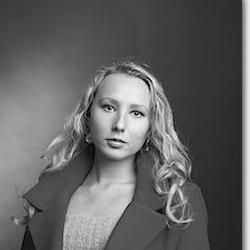 Kristina Vronskaya - founder of the brand of loafers Almost Antoinette
Kristina Vronskaya - founder of the brand of loafers Almost Antoinette Kristina Vronskaya: Yes, we still have brogues, oxfords, classic boats, sandals with fur, espadrilles in line. But our main model is still loafers. Sometimes we are inspired by some new models, and release them in a limited number. In Moscow, we have a workshop that sews shoes for us. Masters help us in tailoring and design development. Recently a disaster happened, our main master died, he was 57 years old. This is a big loss for us, it was interesting to communicate with him, he also helped us in the design development of new models. Now it remains to hope that the apprentices have worked with him for many years, and that the production process will not suffer.
We do not have our own official showroom, we sell shoes through Instagram and partner showrooms in Moscow and in some other cities of Russia. You can also find our loafers in the Moscow Tsvetnoy department store, where we are represented in one of the corners.
Your business is already six years old, how did it all begin?
Kristina Vronskaya: Everything turned out easily and spontaneously. Natasha and I have been friends since childhood, and this was her first idea to start producing loafers. She worked in a similar project, where the business idea was also related to sewing loafers, but the implementation was lame. The business owner was not very attentive to her business, and the quality of the product was average. At some point, I quit my job, and the two of us had the idea to create our own project, our own brand of loafers. Both of us really like Sofia Coppola's film “Marie Antoinette”, we were inspired by this story, many ideas for creating a brand appeared at once, a logo was born.
#PERSONA2#
Natalia Frolova: Loafers just then became fashionable in Moscow, and this coincided with the beginning of the promotion of the Instagram network. Working in the previous project, I helped the hostess in the development of embroideries for loafers, patterns for embroideries were created on the basis of emblems and monograms of Tsarist Russia. But it seemed to me that this is a little not what is needed. In the history of Marie Antoinette and in the style of the French royal court, we saw more romance.
But loafers, after all, were originally Italian shoes?
Kristina Vronskaya: In fact, one cannot say unequivocally that loafers are Italian, London or French shoes. Just Italian brands took up this style of shoes and came up with their own legend of its origin. And in the film of Sofia Coppola, our beloved Kristen Dunst ran in shoes very similar to loafers. They were made of suede or velvet.
Natalia Frolova: In general, at some point both of us had free time, and we decided to try to make the first batch. To do this, we needed to find production in Russia, and we surprisingly quickly found a workshop.
Kristina Vronskaya: Everything grew together very quickly. It seems important to us that shoes are sewn in the workshop with attention to each pair, this is a kind of quality guarantee. Of course, all this could be simplified, and many advised to order the production of shoes in large volumes at factories in Turkey or China. But we are not aimed at mass sales, we would like to control the process and be responsible for our product.
It turns out that the two of you are completely involved in this project, is this your main source of income for you?
No, we have other projects, however, the opportunity to do something else has appeared relatively recently. For the first two to three years, we practiced Almost Antoinette 24 hours a day. Now it has become easier - you learn more, the process is being established, it is becoming easier to work. After all, everything is done in different places - there are materials, embroidery is ordered, shoes are sewn ...
Kristina Vronskaya: We generally have a female version of the business. We meet with clients, discuss design, take measurements. We have long-term relationships with many clients only because they like the process itself. From the very beginning, we decided that we should be customer-oriented, because the high price of the product should be justified. It is very strange when some of our designers put the price of their shoes above average, but at the same time do not offer any service. And the very concept of loafers implies cosiness, impressiveness, friendliness.
And how much are your loafers?
Kristina Vronskaya: In Instagram, we set the price - from 22 to 25 thousand rubles. But we have discounts, if there are unavailable sizes, shoes can be purchased at 11-15 thousand rubles. There are also discounts for regular customers. Some brands determine for themselves the maximum price for a product; we do not have this. There was even experience selling a pair of men's loafers in Grozny for 87 thousand rubles.
Is there a difference in price based on the materials used - suede or velvet?
Kristina Vronskaya: Not. The velvet we use is more expensive than suede.
But velvet loafers quickly lose their appearance. They must be very carefully looked after ...
Kristina Vronskaya: Everything has its own nuances, there is still different velvet. In some ways, yes, they quickly lose their appearance, nothing compares to genuine leather and suede. The first velvet that we used was very expensive, but it turned out that it does not stretch well, and we did not take it anymore. If we use fabric upper when sewing shoes, we have to pay attention to how the longitudinal thread stretches. It should stretch in a certain way, no more and no less, and all this must be tried. The quality of the fabric is not so easy to understand from the very beginning. In some ways, working with velvet is more difficult, but in some ways easier. Because velvet is a single piece of fabric that can be pulled and it will be the same anywhere, and if you take suede, its structure is heterogeneous - somewhere it is thicker, somewhere thinner, it’s better not to breathe over a piece at all .
Natalia Frolova: Once we bought a very beautiful nude suede, almost the last piece, and the master, pulling it, ruined three pairs. In some places she was too thin and torn. It happens that several of our customers order a certain type of suede at once, and you have to run around looking for just that, but this is a pleasant concern.
But your embroidery in the form of a monogram, have you patented this design? Can it be copied?
Yes, this is our trademark. But in terms of copying, we are not very protected, if you slightly change some branch in the pattern - this will be a different sign, and it will be impossible to make any claims against it.
Did you draw a monogram yourself?
Kristina Vronskaya: Yes, it took a week. We studied engravings, somewhere we rounded something. We had different variations. We took some elements and arranged. We use our monogram not only for ornament for the top of loafers, we had a very beautiful limited collection of clothes, which we decorated with elements of our embroidery. So the bombers were embroidered. Natasha defended her graduation diploma in our embroidery.
For which university?
At first I studied in Stroganovka, and then I moved to the Higher School of Economics, they now have a very cool faculty of graphic design.
Kristina Vronskaya: And I am a journalist by my first education, but I have been sewing since childhood. But when we started practicing loafers, I decided that I needed to somehow pump in this area and finished the course at the British school of design.
Kristina Vronskaya: Initially, we had a ridiculous start-up capital - in the region of 90 thousand rubles, with this money we made the first 10 pairs of loafers. Friends helped to shoot the models. Further we did not invest practically anything, if only for little things. Everything started spinning by itself, and now we have a good charter capital. In the beginning, markets were a good help. Lambada Market became our first platform. They have a selection of brands that they exhibit, they took us. And then word of mouth, Instagram, interviews in The Hopes & Fears and the support of The Village, who took our models for shooting, special projects, helped - all this bore fruit.
Natalia Frolova: In our tandem, Christina comes up with a collection, together we refine the details, and I am engaged in filming and promotion. I’m creating a story, I’m thinking how to correctly submit it.
Kristina Vronskaya: Nowhere is it without it. A beautiful photograph is sometimes more expensive than the product itself. Although the photo about the product is not worth judging.
Natalia Frolova: When we started the project, I thought that I could do anything, I was sure that I was shooting well, but it turned out that the subject photo was not so simple, I had to master it.
And how many pairs a month do you order?
Kristina Vronskaya: Depends on the time of year. From spring to autumn a month sells somewhere from 80 to 100 with more than steam, sometimes 60 pairs. Activity is also observed on New Year's Eve. But even in the deadliest seasons of the week we sell two or three pairs.

Instagram says it all depends on advertising. Give, go orders, do not give - failure?
Natalia Frolova: Of course, a lot depends on advertising, but sometimes it’s not at all clear where people come from. There are some Instagram mechanisms that I can’t comprehend - so it happens that without ads people come from somewhere. We have fans of the brand, people who met us on the markets, they are happy to upload photos, share our publications, but as a rule, they don’t buy anything, they do not belong to our target audience.
And who is your target audience?
Kristina Vronskaya: Women from 30 to 50 years of age, wealthy, with chic. And the fans are young people from 13 to 25 years.
That is, who likes the posts and who buys are different people?
Kristina Vronskaya: Yes. Our main customers will buy and never post photos of their shoes on Instagram. We have a client who basically does not want to tell anyone where she bought our loafers.
Did you immediately determine the price of the shoes?
Kristina Vronskaya: No, pricing was not an easy task.
Likely, at markets at first they sold cheaper?
Natalia Frolova: Initially, we generally wanted to sell shoes at a lower price, and as much as we could, we tried to reduce our margin so that the shoes were inexpensive, but that didn’t work. Apparently, a certain psychological moment plays a role - people think that a quality thing made of good materials, handmade, cannot be cheap. If the price is low, this is suspicious.
Kristina Vronskaya: In fact, the client is more pleased to part with a sufficient amount of money and feel that he bought a thing, not just another consumer goods. As soon as we raised the price of our loafers, almost twice, we immediately began to sell twice as much. By the way, the models cannot be duplicated.
Interestingly, it is believed that among Instagram users there are few people in the 50 area, that this social network has a more youthful audience?
Natalia Frolova: I can not agree that 50-year-olds do not sit on Instagram. We have clients of this age who follow us through this social network. The frequent answer when we ask - how did you find out about our brand - came across Instagram. There was a moment that we got to the “Recommended” on Instagram, it also had a great impact on the brand promotion, subscriptions to our channel were sent.
How long did it take you to start earning?
Kristina Vronskaya: We arrived at a profit in less than two years. Started to work as a plus.
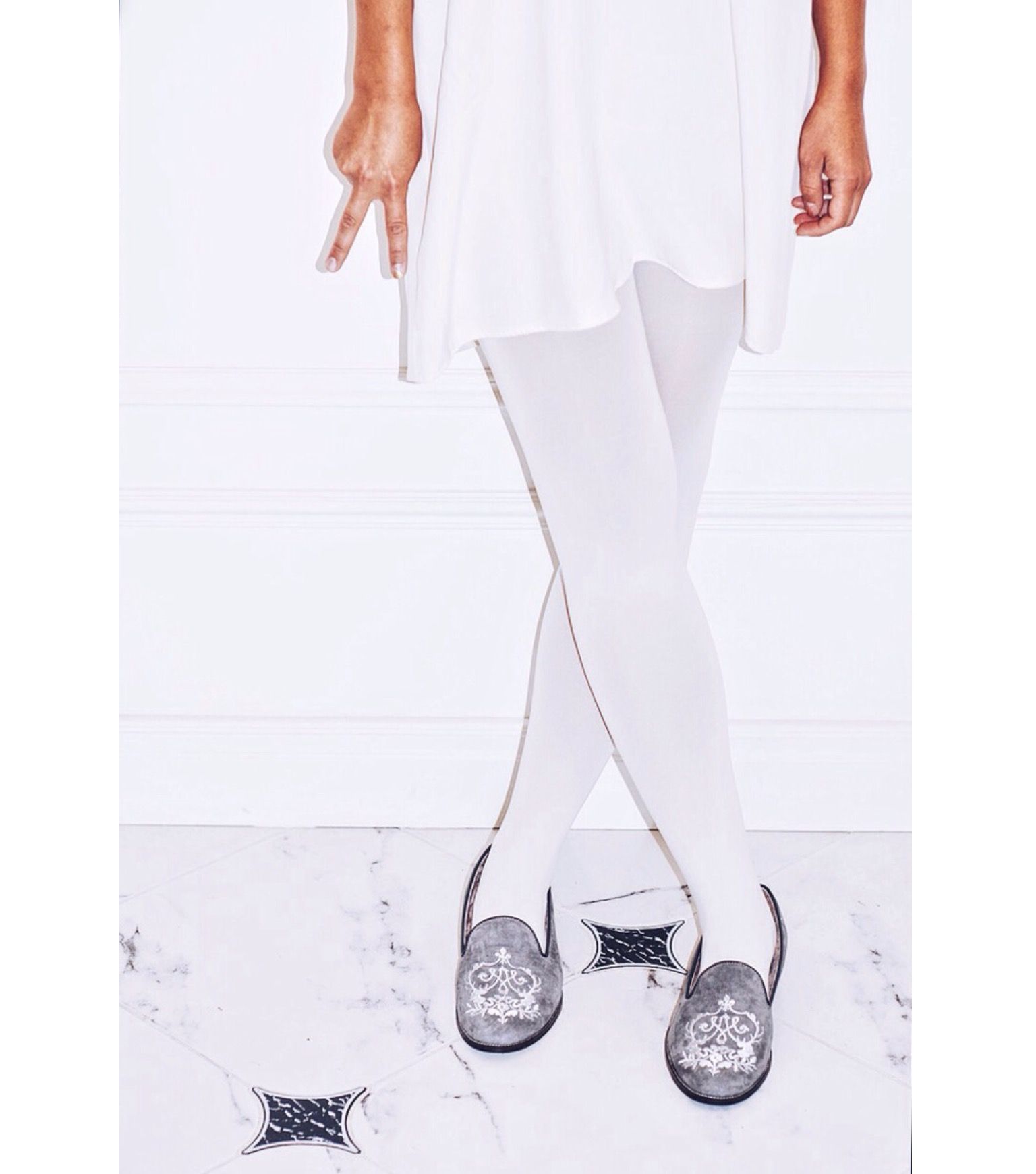
And when did you raise the price?
Ksenia Vronskaya: In the first 4-5 months. We constantly participated in the markets, and communication with the Sunday up market platform, which set 150% margin, made us think about the price. Now this market seems to no longer exist.
There were many similar events - in the Moscow Gallery (Fashion Season shopping gallery), in Tsvetnoy in Lambada and on Neglinnaya. Now it is slowly dying, it is strange that they do not change the format.
Natalia Frolova: For me, the markets were a real stress. It’s hard to physically and mentally work for them - very early arrivals, you need to spend there two days in a row, a huge number of people. We have to communicate with buyers directly, but we are not sellers. But now they have learned this.
At first, we taught ourselves not to start sentences with the word “no”, not to apologize every five seconds. We started reading books on sales techniques.
Do you think that such a business model as selling through Instagram will remain with you?
We are thinking about how we will develop in the future. I want to grow somewhere. At the moment, of course Instagram is inevitable, but this social network is losing its popularity due to the huge amount of advertising. Right now, literally everything is being sold on Instagram, and people are tired of this and have stopped responding to offers. We will definitely need to look for new ways of implementation.
Don't have an office?
Kristina Vronskaya: We hold formal meetings on the side. I have my own workshop in which clothes are sewn ... and at one time we wanted to open our own showroom, but when you consider the costs, you understand that this is an unnecessary luxury. I don’t pay anything on Instagram. I don’t want to waste 80 thousand rubles.
In showrooms, we give our shoes only on terms of purchase, we agree to implement in rare cases, when it comes to sales in status stores.
Have you tried selling through large online sites like Lamoda?
Kristina Vronskaya: We wanted to work with Aziele, this site suits us more than Lamoda. They don’t need the endless sorting and partisanship that everyone requires - “there are few models of any size range left — let's do it again!”
At first, we knew little and played according to the given rules. For example, the store has adopted a range of sizes - from 35 to 41, you must provide it, each color of each pair of five pieces. But from our own experience, we already know that 35 shoes don't need that much size. You need to make three times as many pairs of 38 and 39 size, and 35 will be enough for one. When such worthless demands are made, these couples lie, they can only be discounted. We spend time on their production, and in the end we give it back with a very small margin, and this is not interesting. Now we are trying to dictate our conditions, and we succeed. But it came only with experience.
It turns out that you do not need a warehouse?
Kristina Vronskaya: As a rule, we customize all parties. Our craftsmen do not refuse us to keep their shoes until the courier. There are force majeure when my apartment turns into a warehouse, but not often.
When you started, there was practically no competition in the market, but now?
Natalia Frolova: Now the competition is more serious, but not so much in terms of loafers, as in general in Russia there are more good handmade shoes, strong shoe designers and craftsmen. There are now more opportunities for developing your own shoe brand in Russia.
| Please rate the article |
Materials on the topic
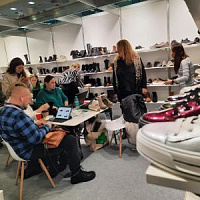
The international footwear exhibition Euro Shoes premiere collection was successfully held in Moscow

We are ready for active development in the Russian market
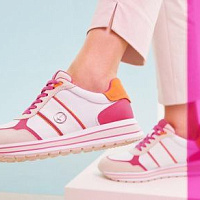
Bright colors of the approaching spring: shoe brand TAMARIS showed a new collection SS'24
IGI&Co presented at EURO SHOES a new line of Urban active sneakers with a GORE-TEX membrane

Turkish brand Vaneda on Euro Shoes
Popular
 Coach turned to Big Data analysis and won the interest of a young audience
American handbag brand Coach has planned the success of its Tabby model among a younger audience, Generation Z, by turning to big data analysis, abandoning traditional and analogue tools, such as human intuition or the ability of any executive to sense “which way the wind will blow,” writes B.O.F.
Coach turned to Big Data analysis and won the interest of a young audience
American handbag brand Coach has planned the success of its Tabby model among a younger audience, Generation Z, by turning to big data analysis, abandoning traditional and analogue tools, such as human intuition or the ability of any executive to sense “which way the wind will blow,” writes B.O.F.
 IDOL updates the concept
The IDOL brand, part of the Melon Fashion Group portfolio, opened the first flagship in an updated concept in the Aviapark shopping center in Moscow.
IDOL updates the concept
The IDOL brand, part of the Melon Fashion Group portfolio, opened the first flagship in an updated concept in the Aviapark shopping center in Moscow.
 Seven “sins” of the shoe business. How do owners harm the company with their own hands?
Why is Company X able to create a strong, profitable brand, but Company Y is struggling to make ends meet? Many people prefer to attribute success to luck, luck, or the support of strong patrons. And few people ask themselves the question: “What am I doing wrong?” Moreover, many entrepreneurs begin to harm their business from the first day of its opening. In this article, together with SR expert in the field of fashion business management and development, Maria Gerasimenko, we will look at the 7 main “sins” that business owners commit using specific examples.
Seven “sins” of the shoe business. How do owners harm the company with their own hands?
Why is Company X able to create a strong, profitable brand, but Company Y is struggling to make ends meet? Many people prefer to attribute success to luck, luck, or the support of strong patrons. And few people ask themselves the question: “What am I doing wrong?” Moreover, many entrepreneurs begin to harm their business from the first day of its opening. In this article, together with SR expert in the field of fashion business management and development, Maria Gerasimenko, we will look at the 7 main “sins” that business owners commit using specific examples.
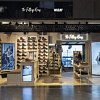 Current techniques in lighting a shoe store
Today, walking through the galleries of shopping centers, we see a variety of formats of offline stores. New concepts of retail spaces attract with an individual, memorable design. In a certain sense, they are an element of the show, a tool through which the buyer receives a new and interesting experience. Together with SR expert in the field of lighting technology in retail, Tatyana Ryzhova, we will look at current lighting design techniques for modern shoe stores, which we will see more and more often in new retail outlets in the near future.
Current techniques in lighting a shoe store
Today, walking through the galleries of shopping centers, we see a variety of formats of offline stores. New concepts of retail spaces attract with an individual, memorable design. In a certain sense, they are an element of the show, a tool through which the buyer receives a new and interesting experience. Together with SR expert in the field of lighting technology in retail, Tatyana Ryzhova, we will look at current lighting design techniques for modern shoe stores, which we will see more and more often in new retail outlets in the near future.
 Louis Vuitton opens a new factory in Italy
Louis Vuitton has opened its second shoe factory in Italy. After opening the first one in Fiesso d'Artico in Veneto, the LVMH flagship brand has just opened a new production site dedicated to this category of footwear in the industrial zone of Civitano in the Marche region. There is also another brand production facility in Tuscany, where bags and leather accessories are produced, writes fr.fashionnetwork.com.
Louis Vuitton opens a new factory in Italy
Louis Vuitton has opened its second shoe factory in Italy. After opening the first one in Fiesso d'Artico in Veneto, the LVMH flagship brand has just opened a new production site dedicated to this category of footwear in the industrial zone of Civitano in the Marche region. There is also another brand production facility in Tuscany, where bags and leather accessories are produced, writes fr.fashionnetwork.com.
 The Euro Shoes@CAF exhibition will be held in Almaty
From March 11 to 13, the Euro Shoes@CAF (Central Asia Fashion) exhibition will be held in Almaty at the Atakent exhibition complex. The exhibition, which is the largest international event in the fashion industry in Central Asia, will present collections of clothing, shoes and accessories.
The Euro Shoes@CAF exhibition will be held in Almaty
From March 11 to 13, the Euro Shoes@CAF (Central Asia Fashion) exhibition will be held in Almaty at the Atakent exhibition complex. The exhibition, which is the largest international event in the fashion industry in Central Asia, will present collections of clothing, shoes and accessories.
 Euro Shoes will start operating on February 19 in Moscow!
The winter session of the international exhibition of footwear and accessories Euro Shoes premiere collection will be held in Moscow at the Expocenter from February 19 to 22. The organizers promise the presence of all the main participants at the exhibition, as well as new names from Europe, Asia and Russia.
Euro Shoes will start operating on February 19 in Moscow!
The winter session of the international exhibition of footwear and accessories Euro Shoes premiere collection will be held in Moscow at the Expocenter from February 19 to 22. The organizers promise the presence of all the main participants at the exhibition, as well as new names from Europe, Asia and Russia.
 American buyers couldn't buy Birkin bags and sued Hermès
French fashion house Hermès is facing a lawsuit in California from two customers who were unable to purchase exclusive Birkin bags. The fashion house is accused of unfair commercial practices.
American buyers couldn't buy Birkin bags and sued Hermès
French fashion house Hermès is facing a lawsuit in California from two customers who were unable to purchase exclusive Birkin bags. The fashion house is accused of unfair commercial practices.
 Why Rendez-Vous and Yandex Lavka released a “bread bag”
Shoe retailer Rendez-Vous announced the launch of a spring collaboration with Yandex Lavka and released a roll that resembles the shape of a woman’s handbag. This “Bread Bag” is presented in the Yandex.Lavka application at a price of 249 rubles. On the product packaging there is a promotional code for 1000 rubles, which can be spent in the Rendez-Vous network.
Why Rendez-Vous and Yandex Lavka released a “bread bag”
Shoe retailer Rendez-Vous announced the launch of a spring collaboration with Yandex Lavka and released a roll that resembles the shape of a woman’s handbag. This “Bread Bag” is presented in the Yandex.Lavka application at a price of 249 rubles. On the product packaging there is a promotional code for 1000 rubles, which can be spent in the Rendez-Vous network.
 Camper has released innovative sneakers - designers
Spanish brand Camper's new Roku sneaker features six interchangeable components to create up to 64 different looks and color combinations. Roku means "six" in Japanese.
Camper has released innovative sneakers - designers
Spanish brand Camper's new Roku sneaker features six interchangeable components to create up to 64 different looks and color combinations. Roku means "six" in Japanese.
 Turkish brand Vaneda on Euro Shoes
Street style, sport, outdoor, military – the main style directions of footwear of the company from Turkey
Turkish brand Vaneda on Euro Shoes
Street style, sport, outdoor, military – the main style directions of footwear of the company from Turkey
 Christian Louboutin presented a collection in a cowboy style
At the Loubi Show in Paris, the French luxury brand Christian Louboutin presented its fall 2024 collection, following the trend - in the style of the Wild West. It included cowboy boots and rhinestone loafers.
Christian Louboutin presented a collection in a cowboy style
At the Loubi Show in Paris, the French luxury brand Christian Louboutin presented its fall 2024 collection, following the trend - in the style of the Wild West. It included cowboy boots and rhinestone loafers.
 Fashion Week takes place in Moscow
Fashion Week takes place in the Russian capital. Events include fashion shows, markets where you can purchase clothes, bags and accessories, and a B2B Showroom for fashion industry professionals.
Fashion Week takes place in Moscow
Fashion Week takes place in the Russian capital. Events include fashion shows, markets where you can purchase clothes, bags and accessories, and a B2B Showroom for fashion industry professionals.
 We are ready for active development in the Russian market
Friedrich Naumann, CEO of the Tamaris brand, told Shoes Report about the company’s ambitious plans, business development in Russia and expansion of the retail network, and also shared details about new collections and launches.
We are ready for active development in the Russian market
Friedrich Naumann, CEO of the Tamaris brand, told Shoes Report about the company’s ambitious plans, business development in Russia and expansion of the retail network, and also shared details about new collections and launches.
 Fashion trends Fall-Winter 2023/24 for commercial footwear purchases
Permanent contributor to Shoes Report. Elena Vinogradova, an expert in sales and purchases in the fashion business, prepared an overview of the trends for the autumn-winter 2023/24 season especially for us.
Fashion trends Fall-Winter 2023/24 for commercial footwear purchases
Permanent contributor to Shoes Report. Elena Vinogradova, an expert in sales and purchases in the fashion business, prepared an overview of the trends for the autumn-winter 2023/24 season especially for us.
 MSCHF and Crocs launch "Big Yellow Boots"
Creator of the Big Red Boots, Brooklyn brand MSCHF has teamed up with American plastic clog and sandal brand Crocs for another oversized shoe. The new Big Yellow Boots will go on sale on August 9th.
MSCHF and Crocs launch "Big Yellow Boots"
Creator of the Big Red Boots, Brooklyn brand MSCHF has teamed up with American plastic clog and sandal brand Crocs for another oversized shoe. The new Big Yellow Boots will go on sale on August 9th.
 Five rules of professional lighting for a shoe store - something that is relevant in any season
When developing a lighting concept for shoe retailers, it is important to take into account not only the history of the brand, the architectural content of the premises, the target audience of the stores, but also the seasonality of the goods. With the onset of the cold season, client preferences change: bright weightless shoes are replaced by more massive models in discreet dark colors. Despite significant differences in summer and winter collections, the overall philosophy of the brand, its recognition should remain unchanged at any time of the year. Tatyana Ryzhova, an SR lighting expert in fashion retail, has identified five basic rules for a competent lighting concept for a shoe store for readers of the magazine, which will help to present winter assortment to customers in a winning way.
Five rules of professional lighting for a shoe store - something that is relevant in any season
When developing a lighting concept for shoe retailers, it is important to take into account not only the history of the brand, the architectural content of the premises, the target audience of the stores, but also the seasonality of the goods. With the onset of the cold season, client preferences change: bright weightless shoes are replaced by more massive models in discreet dark colors. Despite significant differences in summer and winter collections, the overall philosophy of the brand, its recognition should remain unchanged at any time of the year. Tatyana Ryzhova, an SR lighting expert in fashion retail, has identified five basic rules for a competent lighting concept for a shoe store for readers of the magazine, which will help to present winter assortment to customers in a winning way.
 I doubt and object: how to find an approach to difficult clients?
How good and serene would be the work of a salesperson if the customers were calm, cheerful, always knew exactly what they wanted, and bought, bought, bought! It is a pity that this is possible only in dreams. Therefore, we will not dream, but we will act. Together with Maria Gerasimenko, a permanent author of SR, we understand the doubts and objections of buyers and build a strategy for working with them. Our expert pays special attention to the two main objections of buyers, on which 82% of sales are lost.
I doubt and object: how to find an approach to difficult clients?
How good and serene would be the work of a salesperson if the customers were calm, cheerful, always knew exactly what they wanted, and bought, bought, bought! It is a pity that this is possible only in dreams. Therefore, we will not dream, but we will act. Together with Maria Gerasimenko, a permanent author of SR, we understand the doubts and objections of buyers and build a strategy for working with them. Our expert pays special attention to the two main objections of buyers, on which 82% of sales are lost.
 EURO SHOES presents an updated section of the GLOBAL SHOES exhibition with collections of shoe and bag brands from Asian countries
EURO SHOES premiere collection is expanding. Along with the traditional pool of leading European footwear brands from Germany, Spain, Italy and Turkey, several dozen footwear and bag brands from the Middle Kingdom will be presented in the GLOBAL SHOES section at the Moscow Expocentre from August 29 to September 1.
EURO SHOES presents an updated section of the GLOBAL SHOES exhibition with collections of shoe and bag brands from Asian countries
EURO SHOES premiere collection is expanding. Along with the traditional pool of leading European footwear brands from Germany, Spain, Italy and Turkey, several dozen footwear and bag brands from the Middle Kingdom will be presented in the GLOBAL SHOES section at the Moscow Expocentre from August 29 to September 1.
 World Footwear Yearbook: Global footwear production reaches 23,9 billion pairs and is back to pre-pandemic levels
The Portuguese association of shoe manufacturers APICCAPS published the 13th edition of the international statistical bulletin World Footwear Yearbook for 2023, according to which in 2022 the production and export of shoes worldwide increased by 7,6% and 9%, respectively, and the world production of shoes reached 23,9 billion couples and returned to pre-pandemic levels.
World Footwear Yearbook: Global footwear production reaches 23,9 billion pairs and is back to pre-pandemic levels
The Portuguese association of shoe manufacturers APICCAPS published the 13th edition of the international statistical bulletin World Footwear Yearbook for 2023, according to which in 2022 the production and export of shoes worldwide increased by 7,6% and 9%, respectively, and the world production of shoes reached 23,9 billion couples and returned to pre-pandemic levels.
 Rostov footwear brand Novak presented a collection of sneakers and sneakers
In the spring-summer 2023 season, the Rostov-on-Don shoe brand Novak presented a cute collection of sneakers and sneakers for every day. The upper of the shoe is made of genuine leather, suede, nubuck, the sole is made of light EVA.
Rostov footwear brand Novak presented a collection of sneakers and sneakers
In the spring-summer 2023 season, the Rostov-on-Don shoe brand Novak presented a cute collection of sneakers and sneakers for every day. The upper of the shoe is made of genuine leather, suede, nubuck, the sole is made of light EVA.
 Jacquemus x Nike collaboration released
The second collaboration between Jacquemus and Nike, which has been talked about so much, is finally out. The appearance of the couple for many was a surprise. The model of Nike Air Force 1 sneakers, which was taken as the basis of the new collection, has undergone significant changes.
Jacquemus x Nike collaboration released
The second collaboration between Jacquemus and Nike, which has been talked about so much, is finally out. The appearance of the couple for many was a surprise. The model of Nike Air Force 1 sneakers, which was taken as the basis of the new collection, has undergone significant changes.
 Crocs releases a collaboration with Barbie
If Barbie ditched heels and wore crocs, they would be pink. It was this collection in pink that was released by the American brand of plastic clogs Crocs, for the release of the film "Barbie" in the United States.
Crocs releases a collaboration with Barbie
If Barbie ditched heels and wore crocs, they would be pink. It was this collection in pink that was released by the American brand of plastic clogs Crocs, for the release of the film "Barbie" in the United States.
 Japanese BAPE takes to the catwalk MSCHF Big Red Boots
The story of Brooklyn brand MSCHF's oversized rubber boots continues. The last time they made noise in the auditorium was at the Rick Owens menswear show. Now they have already appeared on the podium.
Japanese BAPE takes to the catwalk MSCHF Big Red Boots
The story of Brooklyn brand MSCHF's oversized rubber boots continues. The last time they made noise in the auditorium was at the Rick Owens menswear show. Now they have already appeared on the podium.
 Shoe educational program: what shoe soles are made of
“What is the difference between TEP and EVA? What does tunit promise me? Is PVC glue? What is the sole of these shoes made of? ”- the modern buyer wants to know everything. In order not to smash his face in front of him and be able to explain whether such a sole suits him in soles, carefully read this article. In it, process engineer Igor Okorokov tells what materials the soles of shoes are made of and what makes each of them so good.
Shoe educational program: what shoe soles are made of
“What is the difference between TEP and EVA? What does tunit promise me? Is PVC glue? What is the sole of these shoes made of? ”- the modern buyer wants to know everything. In order not to smash his face in front of him and be able to explain whether such a sole suits him in soles, carefully read this article. In it, process engineer Igor Okorokov tells what materials the soles of shoes are made of and what makes each of them so good.
 How to set prices that will earn
Some businessmen still confuse the concept of margin with the concept of trade margins and set prices for their goods, guided solely by the example of competitors. No wonder they go broke! Analyst at the Academy of Retail Technologies Maxim Gorshkov gives several tips and formulas with which you can set not only ruinous, but also profitable prices.
How to set prices that will earn
Some businessmen still confuse the concept of margin with the concept of trade margins and set prices for their goods, guided solely by the example of competitors. No wonder they go broke! Analyst at the Academy of Retail Technologies Maxim Gorshkov gives several tips and formulas with which you can set not only ruinous, but also profitable prices.
 Sales of shoes and accessories: effective techniques for business rhetoric
Which speech modules are effective in communicating with potential and current customers of shoe stores, and which are not, Anna Bocharova, a business consultant, knows.
Sales of shoes and accessories: effective techniques for business rhetoric
Which speech modules are effective in communicating with potential and current customers of shoe stores, and which are not, Anna Bocharova, a business consultant, knows.
 We form the salary of sellers: expert advice
“How do you charge your consultants for personal or general sales?” Is one of the most popular questions causing a lot of controversy and gossip on the online forums of retail business owners. Indeed, how to properly form the earnings of sellers? But what about bonuses, where to get a sales plan from, do employees allow them to buy goods at discounted stores? In search of truth, the Shoes Report turned to a dozen shoe retailers, but no company wanted to disclose its motivation system - the process of its development was too complicated and individual. Then we asked four business consultants, and finally became convinced that the topic of seller motivation is very complex, because even our experts could not come to a common opinion.
We form the salary of sellers: expert advice
“How do you charge your consultants for personal or general sales?” Is one of the most popular questions causing a lot of controversy and gossip on the online forums of retail business owners. Indeed, how to properly form the earnings of sellers? But what about bonuses, where to get a sales plan from, do employees allow them to buy goods at discounted stores? In search of truth, the Shoes Report turned to a dozen shoe retailers, but no company wanted to disclose its motivation system - the process of its development was too complicated and individual. Then we asked four business consultants, and finally became convinced that the topic of seller motivation is very complex, because even our experts could not come to a common opinion.
 Technology Selling Issues
There is nothing worse than meeting the buyer with the words “Hello, can I help you with something?”, Because the seller works in the store just to help. Criticizing this well-established pattern of communication with the buyer, Andrei Chirkarev, business coach for effective sales and the founder of the New Economy project, shares the technology of truly selling issues with readers of Shoes Report.
Technology Selling Issues
There is nothing worse than meeting the buyer with the words “Hello, can I help you with something?”, Because the seller works in the store just to help. Criticizing this well-established pattern of communication with the buyer, Andrei Chirkarev, business coach for effective sales and the founder of the New Economy project, shares the technology of truly selling issues with readers of Shoes Report.
 The whole truth about Bayer. Who is he and how to become one?
Bayer is no longer a new, but still a popular and sought-after profession. It’s fashionable to be a buyer. Buyers are at the origins of the emergence and development of trends. If the designer offers his vision of fashion in the season, then the buyer selects the most interesting commercial ideas. It is on buyers that the policy of sales of stores and what, in the end, the buyer will wear depends on. This profession is surrounded by a magical fleur, often associated with a lack of understanding of what exactly is the work of a buyer.
The whole truth about Bayer. Who is he and how to become one?
Bayer is no longer a new, but still a popular and sought-after profession. It’s fashionable to be a buyer. Buyers are at the origins of the emergence and development of trends. If the designer offers his vision of fashion in the season, then the buyer selects the most interesting commercial ideas. It is on buyers that the policy of sales of stores and what, in the end, the buyer will wear depends on. This profession is surrounded by a magical fleur, often associated with a lack of understanding of what exactly is the work of a buyer.
 Fur, and not only: types of lining
In the production of winter footwear, various materials are used that are designed to retain heat and meet the requirements of consumers: natural sheepleather, artificial fur, artificial fur from natural wool and others. All types of lining fur have their own advantages and disadvantages. Let's consider the properties of each of them.
Fur, and not only: types of lining
In the production of winter footwear, various materials are used that are designed to retain heat and meet the requirements of consumers: natural sheepleather, artificial fur, artificial fur from natural wool and others. All types of lining fur have their own advantages and disadvantages. Let's consider the properties of each of them.
 Retail Arithmetic
Before you begin to solve specific problems, you need to find out how accurately all the leaders of your company understand the basic terminology of retail.
Retail Arithmetic
Before you begin to solve specific problems, you need to find out how accurately all the leaders of your company understand the basic terminology of retail.
 How to fire a worker without tears, scandal and trial
Sooner or later, any manager is faced with the need to part with an employee. Properly and on time the dismissal procedure will save the company money, and the boss himself - nerves and time. But why sometimes, knowing that a break in relations is inevitable, we put off the decision for months?
How to fire a worker without tears, scandal and trial
Sooner or later, any manager is faced with the need to part with an employee. Properly and on time the dismissal procedure will save the company money, and the boss himself - nerves and time. But why sometimes, knowing that a break in relations is inevitable, we put off the decision for months?






